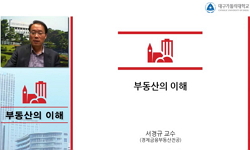Objectives The purpose of this study is to analyze the process of creating, continuously growing, and evolving village schools in Gyeongnam Innovation City. Therefore, this study aims to analyze the activity system of village schools, based on Engest�...
http://chineseinput.net/에서 pinyin(병음)방식으로 중국어를 변환할 수 있습니다.
변환된 중국어를 복사하여 사용하시면 됩니다.
- 中文 을 입력하시려면 zhongwen을 입력하시고 space를누르시면됩니다.
- 北京 을 입력하시려면 beijing을 입력하시고 space를 누르시면 됩니다.

문화역사적 활동이론 관점에서 마을교육공동체 활동 분석과 활성화 방안: K혁신도시 S마을학교를 중심으로 = Methods for analyzing and activating village educational community activities in the cultural-historical activity theory: Focusing on K Innovation City S Village School
한글로보기https://www.riss.kr/link?id=A108783715
- 저자
- 발행기관
- 학술지명
- 권호사항
-
발행연도
2023
-
작성언어
Korean
- 주제어
-
등재정보
KCI등재
-
자료형태
학술저널
-
수록면
365-386(22쪽)
- DOI식별코드
- 제공처
-
0
상세조회 -
0
다운로드
부가정보
다국어 초록 (Multilingual Abstract)
Objectives The purpose of this study is to analyze the process of creating, continuously growing, and evolving village schools in Gyeongnam Innovation City. Therefore, this study aims to analyze the activity system of village schools, based on Engestöm's Cultural Historical Activity Theory, and to study the growth and change of village schools which arose from the process of resolving contradictions.
Methods We conducted a literature research, in-depth interviews, and participant observation, and analyzed the activity system based onEngestöm's Cultural Historical Activity Theory. Two in-depth interviews were conducted first with all village teachers at S village school and secondly with key managers among village teachers.
Results The results of analyzing the village school's activity system from the perspective of cultural-historical activity theory are as follows. The five-year activity period of the village school is largely divided into two periods according to the contradictions and differences of the subject, tool, and object of the activity system. The main contradiction came from the difference in the individual situation and activity of the village teachers, and the difference in perception between the village teachers who watched the identity and activity of the village school. The contradictions that appeared in the tool began with the practical difficulties of recruiting students, leading to two conflicting opinions: one to expand to resident participation activities and one to focus on student-centered activities. The contradictions in the community elements were expressed as the community's lack of understanding of the village school, the absence of governance, and the uncertainty of financial support for the public offering project. The factor that led to the occurrence of expanded learning by overcoming major contradictions was that through continuous formal and informal meetings such as general meetings and teacher learning centers within the village, emotional intimacy was formed between village teachers and relationships expanded, thereby overcoming contradictions and conflicts. It appears that a new activity system has been creatively created.
Conclusions In the results of this study, the elements necessary for the sustainability of village schools and vitalization of village educational communities are as follows. First, it is a democratic communication structure and continuity of learning within the members. Second, the direction and activities of the village school can change, and this must be discussed and agreed upon with the village school members. Third, it is necessary to expand the range of contact with residents in the village and to have a network with the community in the village. Finally, it shows the need for the role and support of the Happy Education District and local governments in the formation of public, government, and academic governance for sustainable activities.
동일학술지(권/호) 다른 논문
-
- 학습자중심교과교육학회
- 고정연
- 2023
- KCI등재
-
보육교사가 인식하는 사회적지지가 직무만족도에 미치는 영향과 심리적안녕감의 매개효과
- 학습자중심교과교육학회
- 고정완
- 2023
- KCI등재
-
과학실험 수업 전 자기 점검표, 동영상 제공이 과학적 태도, 과학 자기효능감, 학업 성취도에 미치는 영향
- 학습자중심교과교육학회
- 홍주현
- 2023
- KCI등재
-
창작동요를 활용한 놀이 중심 활동이 만 3세 유아의 음악적 표현능력과 놀이성에 미치는 효과
- 학습자중심교과교육학회
- 이경연
- 2023
- KCI등재




 스콜라
스콜라



